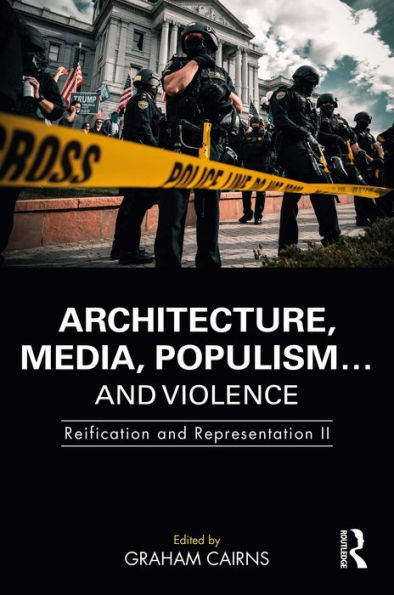The ‘Storming of the Capitol’ was, for many, the culminating media performance of the four-year presidency of Donald Trump. His presidency and its ‘final act’, bore all the hallmarks of a 21st century form of populism and media-politico spectacle that may yet come to dominate the political scene in the US, and worldwide, for years to come. The questions that such events raise are complex, varied and operative across a multitude of disciplines. This book engages with these vexed questions in the broad fields of politics and media, but does so, uniquely, through the prism of architecture.
This book does not, however, limit its view to the recent events in Washington DC or the United States. Rather, it seeks to use those events as the starting point for a critique of architecture in the tapestry of mediated forms of protest and ‘political action’ more generally. Each chapter draws on case studies from across timeframes and across nations.
The book sharpens our critique of the relationship between direct political action, its media representation and the role it assigns to architecture – as played out globally in the age of mass media. In doing so, it opens up broader debates about the past, present and future roles of architecture as a political tool in the context of international political systems now dominated by changing and unpredictable uses of media, and characterised by an increasingly volatile and at times violent form of political activism. It is essential reading for any student or researcher engaging with these questions.
The ‘Storming of the Capitol’ was, for many, the culminating media performance of the four-year presidency of Donald Trump. His presidency and its ‘final act’, bore all the hallmarks of a 21st century form of populism and media-politico spectacle that may yet come to dominate the political scene in the US, and worldwide, for years to come. The questions that such events raise are complex, varied and operative across a multitude of disciplines. This book engages with these vexed questions in the broad fields of politics and media, but does so, uniquely, through the prism of architecture.
This book does not, however, limit its view to the recent events in Washington DC or the United States. Rather, it seeks to use those events as the starting point for a critique of architecture in the tapestry of mediated forms of protest and ‘political action’ more generally. Each chapter draws on case studies from across timeframes and across nations.
The book sharpens our critique of the relationship between direct political action, its media representation and the role it assigns to architecture – as played out globally in the age of mass media. In doing so, it opens up broader debates about the past, present and future roles of architecture as a political tool in the context of international political systems now dominated by changing and unpredictable uses of media, and characterised by an increasingly volatile and at times violent form of political activism. It is essential reading for any student or researcher engaging with these questions.

Architecture, Media, Populism. and Violence: Reification and Representation II
290
Architecture, Media, Populism. and Violence: Reification and Representation II
290eBook
Related collections and offers

Product Details
| ISBN-13: | 9781000713176 |
|---|---|
| Publisher: | Taylor & Francis |
| Publication date: | 10/07/2022 |
| Sold by: | Barnes & Noble |
| Format: | eBook |
| Pages: | 290 |
| File size: | 9 MB |
